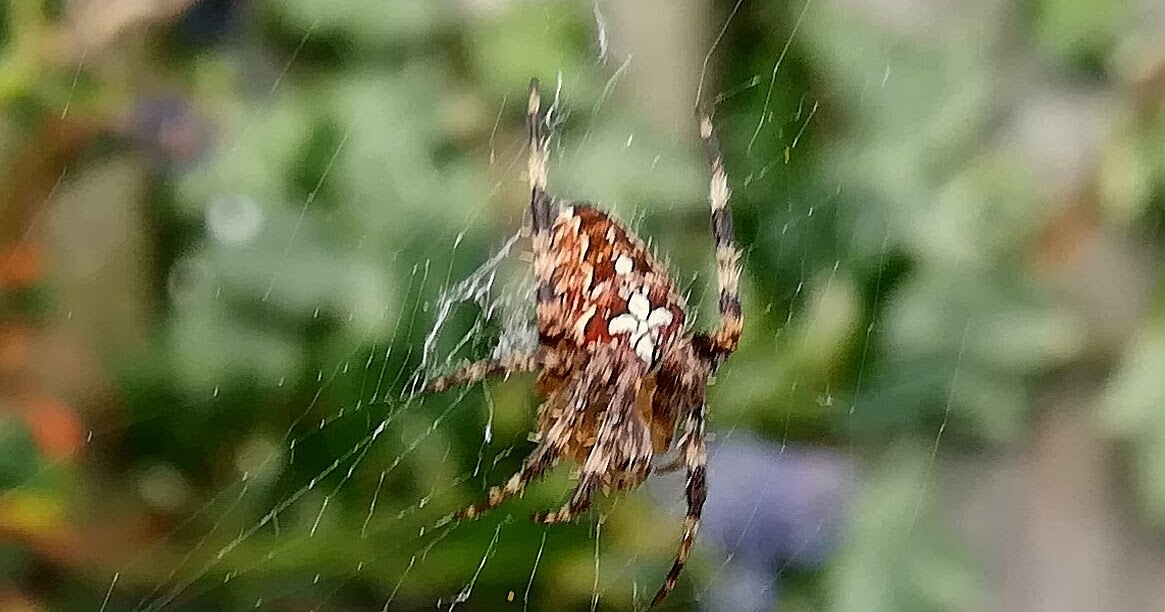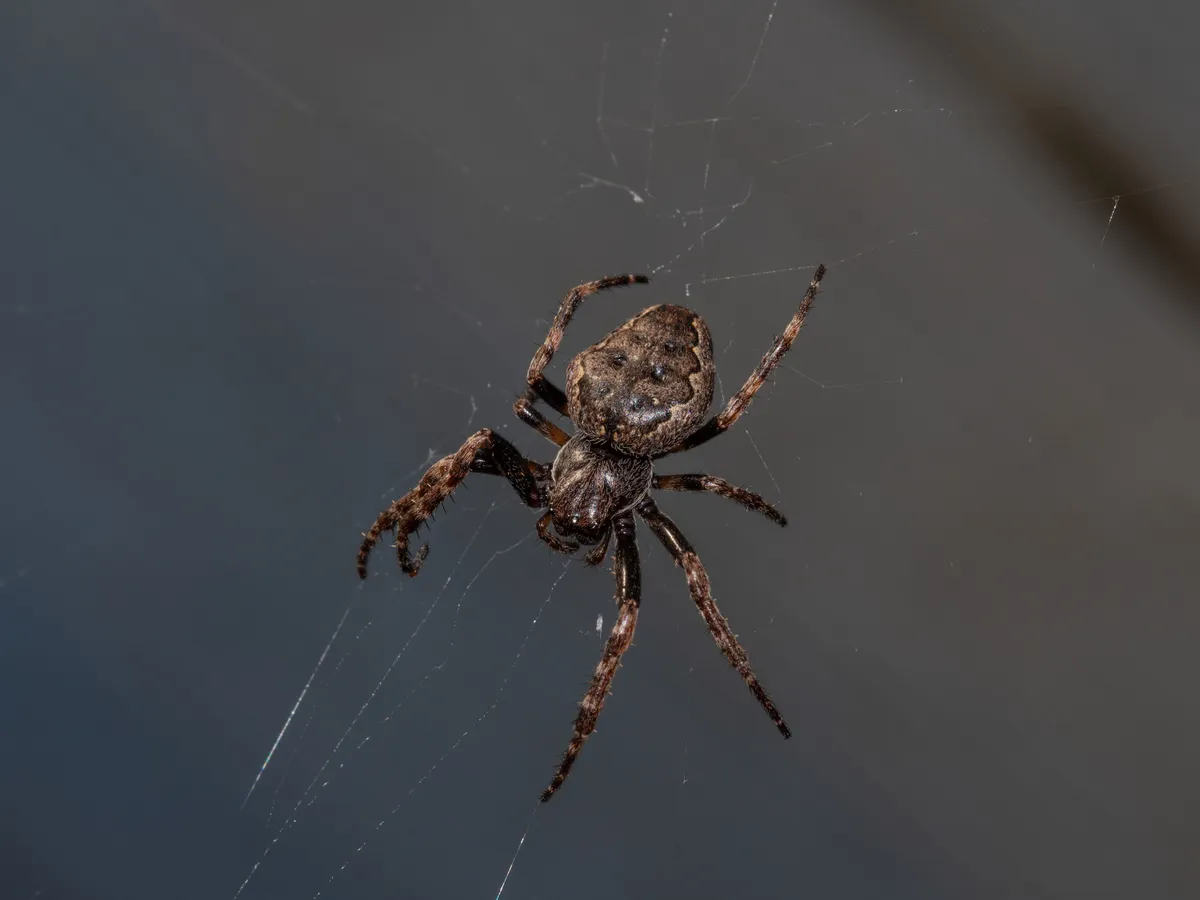The cross orbweaver spider, scientifically known as Araneus diadematus, is a fascinating eight-legged creature that bears a unique marking resembling a fleur de lis or heraldic cross on its abdomen. With its striking appearance and intricate web-spinning abilities, this spider never fails to capture people’s attention in backyards and gardens across Europe and North America.
Identifying the Cross Orbweaver
The cross orbweaver’s white cross-shaped pattern on its abdomen, which is made up of guanine crystal deposits, is what makes it stand out. The spider can have a background color that is anywhere from light yellow to dark gray.
Females are larger, growing up to 0.8 inches long, while males reach just over 0.5 inches in length. In addition to size and markings, identifying traits include:
- Long legs with specialized claws for clinging to web strands
- Orb-shaped webs up to 2 feet wide
- Prefers to build webs near vegetation
The cross orbweaver belongs to the Araneidae family of orb weaver spiders. Its striking appearance gives rise to common names like diadem spider, fleur de lis spider, and crowned orb weaver
Impressive Web Architects
The cross orbweaver female is a skilled web builder, constructing large, intricate orb webs with amazing precision. The vertical and horizontal silk threads form concentric circles that act as snares for flying insects.
Building the web can take hours as the spider carefully lays the foundation lines and then fills in the orb structure The spider sits head down in the center of the web and uses vibrations to detect trapped prey With its long front legs, it swiftly wraps the prey in more silk before carrying it back to the center for consumption.
Cross orbweavers often choose the same spots every day to make their webs, such as on porches, in shrubs, on tree branches, or along the edges of gardens. The spider can both eat on the web and hide during the day in it.
Habits and Habitats
Cross orbweavers can be found in large numbers in North America, Asia, and Europe. You can see them best in late summer and fall, when the females build their beautiful webs.
These spiders overwinter as juveniles or eggs before reaching maturity in spring. Females die soon after laying eggs in the fall, while males may continue to live for several months.
In rural areas, the cross orbweaver inhabits meadows, fields, and forest clearings. But it also adapts readily to urban environments like suburbs and city parks.
Harmless to Humans
Cross orbweavers look scary, but they are not thought to be dangerous to humans. They rarely bite unless severely threatened or provoked.
The venom is mild and non-toxic, so bites may cause slight pain and temporary redness but no serious effects. The best approach is to respect the spider’s space and admire its artistic web from a distance.
For gardeners and nature lovers, the cross orbweaver is a beneficial species that helps control insect pests without harming plants. As a non-aggressive spider mostly active at night, it peacefully coexists with humans.
A Majestic Web Artist
With its ornate web dangling between branches or stretched across a garden archway, the cross orbweaver puts its artistry on display for all to see. The striking fleur de lis marking is like the spider’s signature flourish on a masterpiece.
So next time you come across one of these fascinating web spinners, take a moment to appreciate its delicate and intricate design. Looking closely at the cross orbweaver gives us a new perspective on spiders as complex creatures with their own unique beauty in the natural world.

Bridge orb-weaver (Larinioides sclopetarius)

Elegantly marked, this has velvety grey-and-white colouring (brown hints sometimes) and an undulating white line down each side of its abdomen. Its webs are over water on bridges, lock gates and wharves. Head and body up to 14mm in length.
Walnut orb-weaver (Nuctenea umbratica)

Glossy dark-brown above, fawn at edges, separated by undulating pale line on each side of abdomen. Its body is wide and flattened, and it hides during the day in cracks in fenceposts or under tree bark. At night, it spins a web. Body up to 15mm long.
Baby funnel-web spiders everywhere!
FAQ
Is a cross orbweaver spider poisonous?
However, there is no reason to fear these autumnal creepy crawlies: they are completely harmless.
Is the orb weaver spider poisonous?
Orb weavers are not dangerous to humans and will not attack if you come across one. However, it is best to leave them on their web because they can’t see well and the ground is a bad place for them.
Is the arrowhead spider poisonous?
The arrowhead spider is a harmless species of spider to humans.
What does the cross spider symbolize?
Cross Spider – Araneus diadematus The species epithet diadematus refers to a diadem, “A jeweled crown or headband worn as a symbol of sovereignty. ” It’s easy to see the resemblance of the abdominal markings to a crown worn by English royalty, or at least royalty adhering to the Christian faith.
